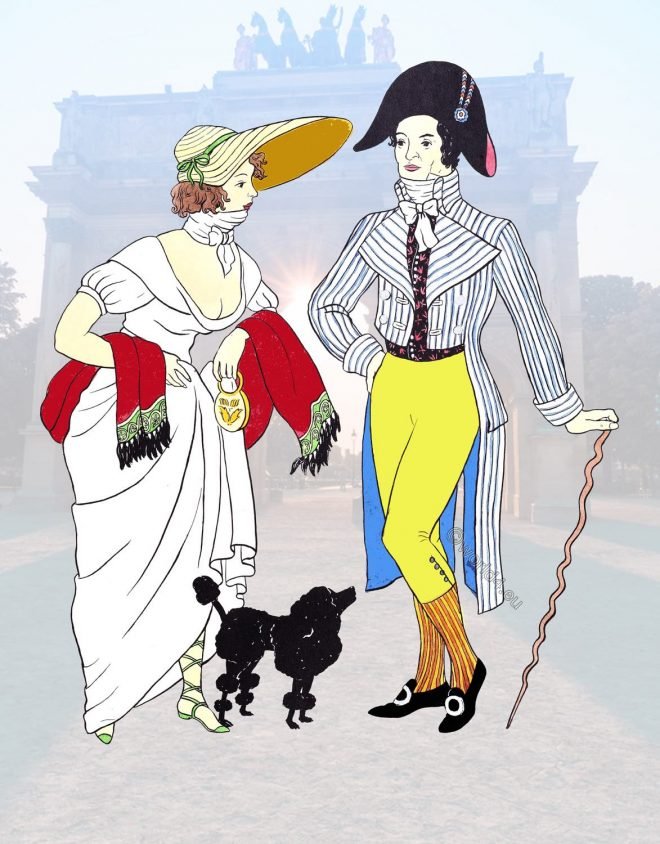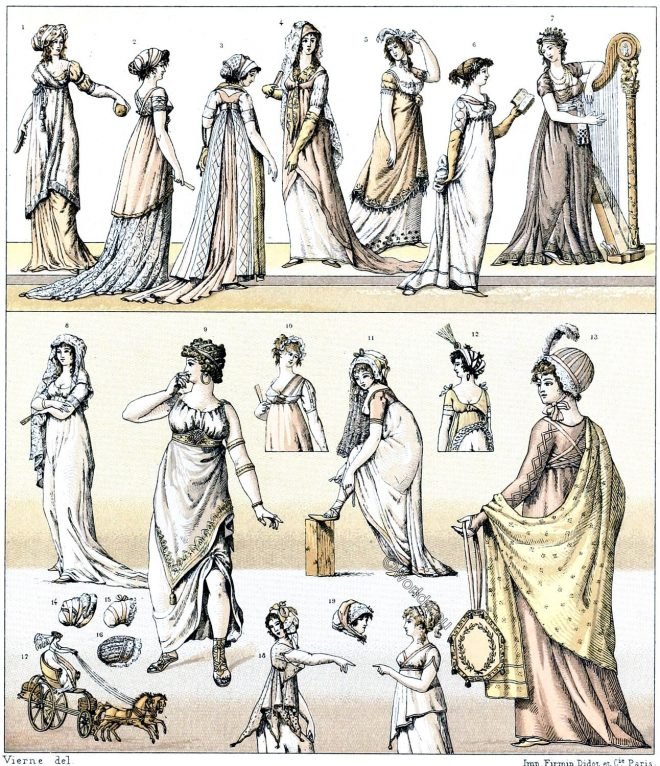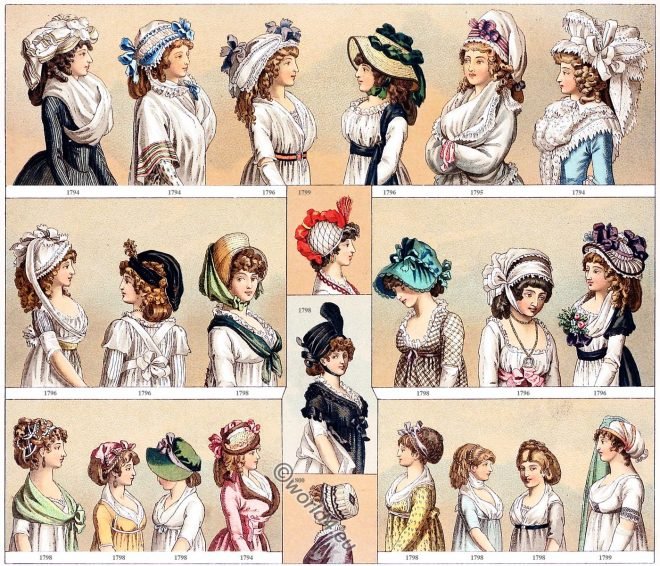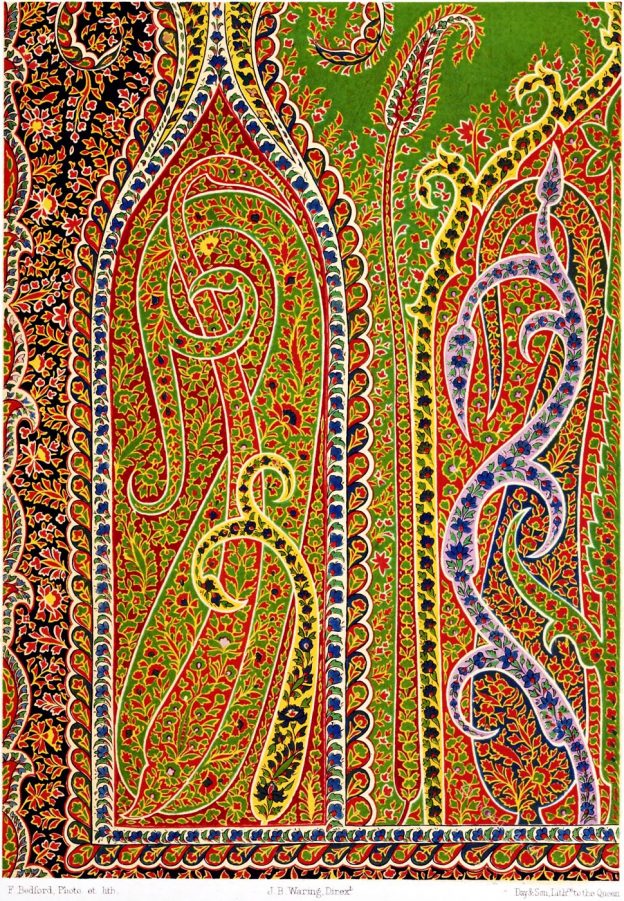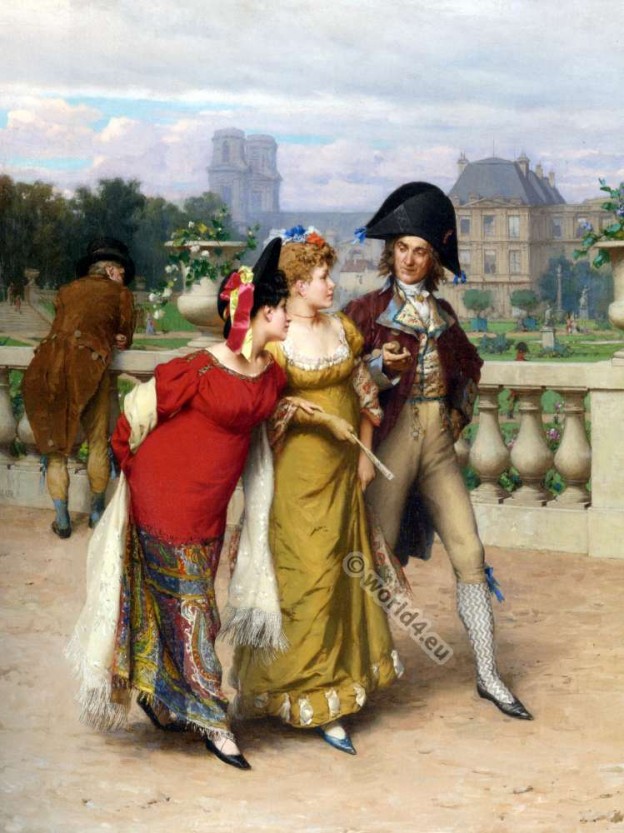The striped stockings and crooked stick are characteristic of the Incroyables. The trend toward simplicity resulted in a classic silhouette for women (Merveilleuses).
Category: 1800
The Graecomania. Modes of the Directory and the Consulate.
Women’s fashion of classicism in France at the end of the 18th century. Modes of the Directory and the Consulate (1795-1804).
Female costumes and fashion from 1794 to 1800. France 18th century.
The comfortable costume, in which the belt was attached at a normal height, was soon followed by the close-fitting dress, the robe collante
Feminine costumes from 1794 – 1800. Directory to Empire.
The figures are all taken from fashion journals. The period includes the last period of the convent, the rule of the board of directors and the beginning of the consulate.
The fashions of the end of the 18th century. After German Journals.
Europe. 18th century. The French influence. Under the reign of terror, the development of fashions began and reached perfection under the direction of the Directorate.
A Chinese woman of highest class.
The annexed Plate represents a female of the highest class in her finest habit.
Textil Art from India. Design for a shawl.
Fac-simile of a portion of a native Indian drawing. Design for a shawl.
Empire Fashion and Hairstyles from 1800 to 1810.
First Empire Fashion and Hairstyles from 1800 to 1810. According to the fashion journals of the time. Modes et Coiffures de 1800 a 1810. D après les journaux de mode de… Read More
Fashion under the French Revolution 1789 to 1802.
Great Days of the Revolution. Fashion under the French Revolution & Directoire Period 1789 to 1802.
Mary Stuart. Drama by Friedrich Schiller, 1800.
Mary Stuart is a classic drama by Friedrich Schiller. The tragedy was first performed at the Weimar Court Theater on June 14, 1800.

